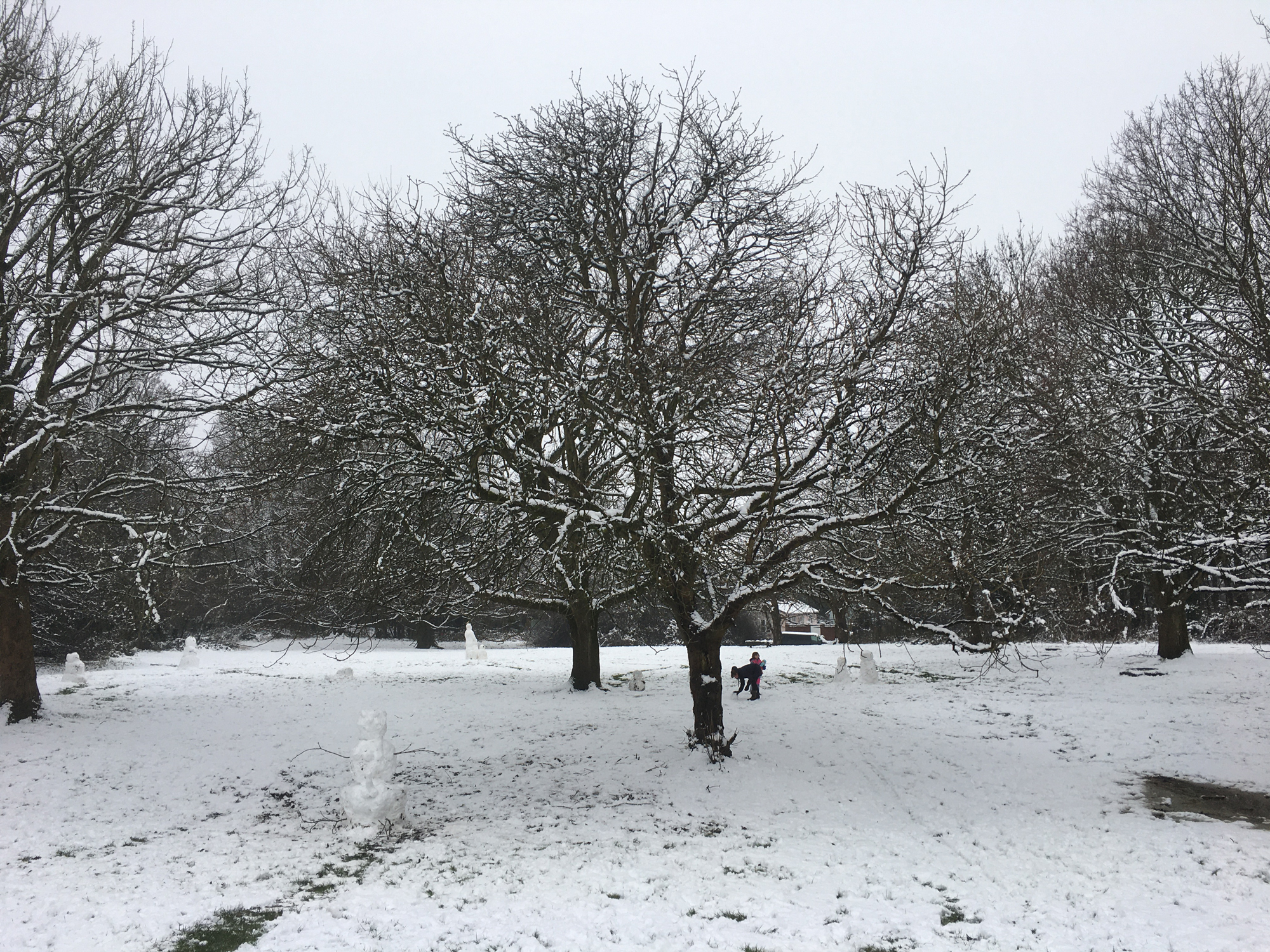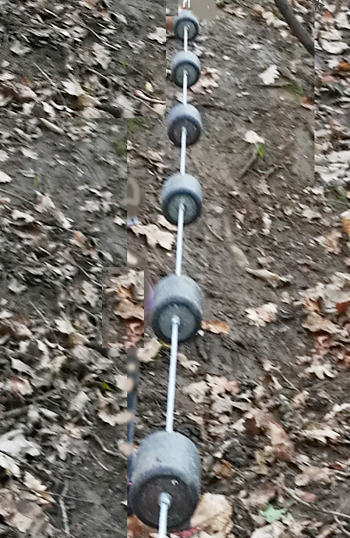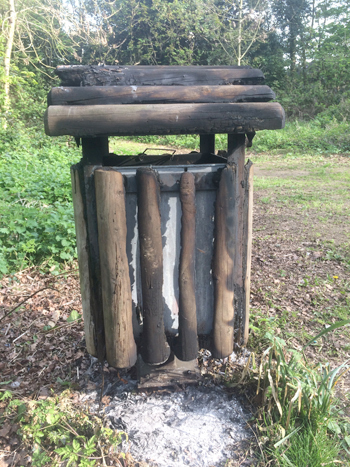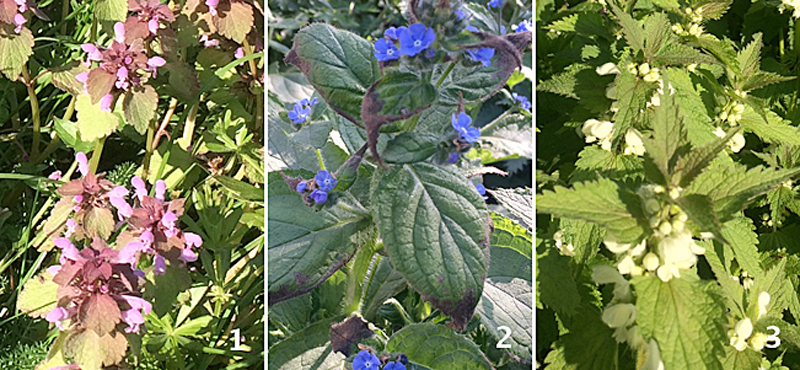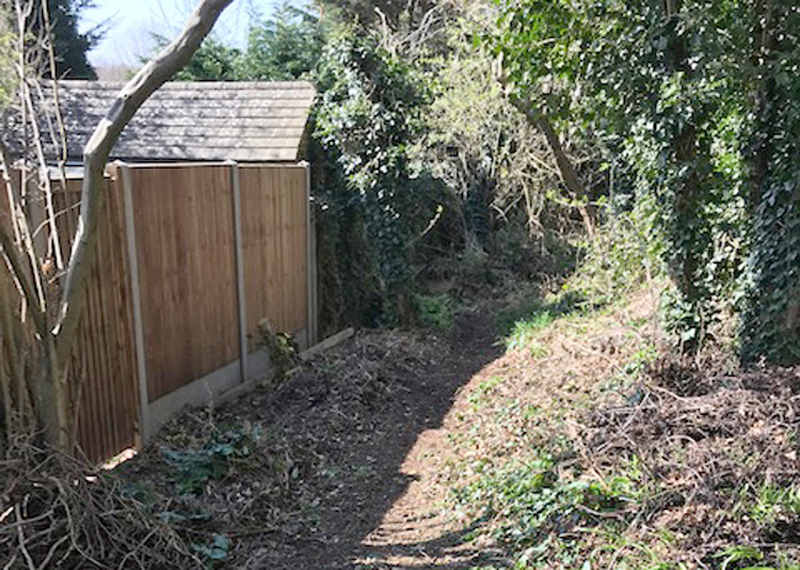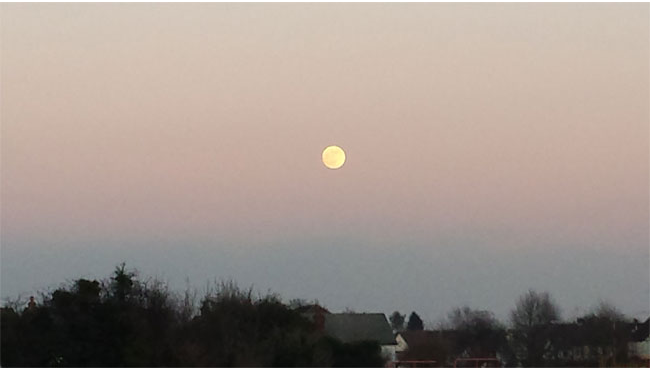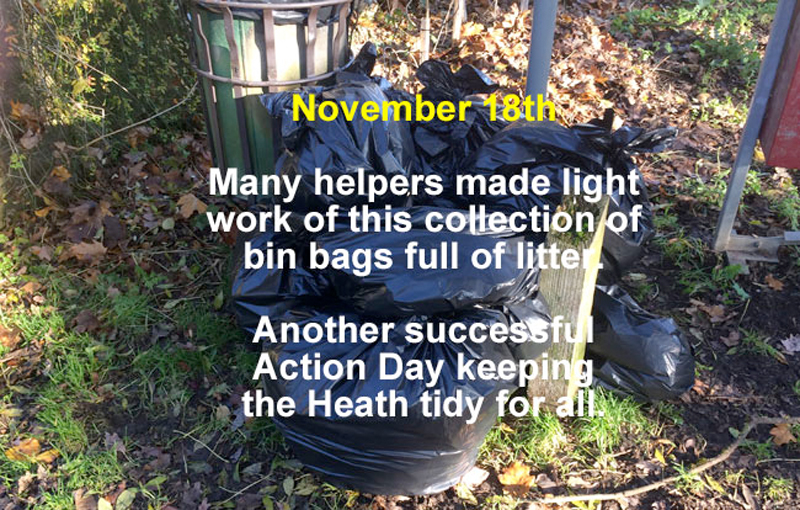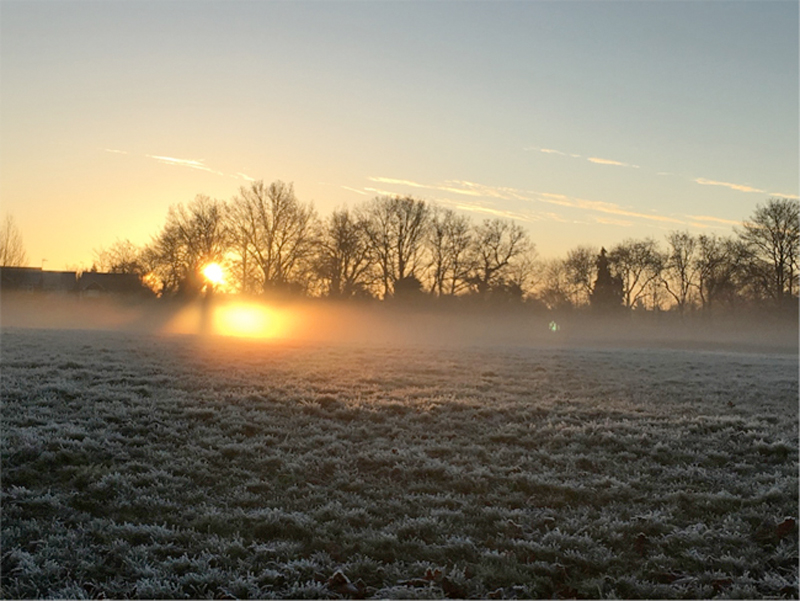
This was the site of the Second Battle of St Albans 1461.
A parhelion or sun dog is an optical phenomenon that consists of a bright spot to one or both sides of the Sun caused by the refraction of sunlight by ice crystals in the atmosphere. There is often a halo as well. In this case there is just one sun dog and no halo.
Peter Burley, local historian, writes: Its historical interest is that a parhelion appeared on another Wars of the Roses battlefield in January 1461 at Mortimer’s Cross in Herefordshire. The Earl of March – the Yorkist commander and future Edward IV – seized the initiative and told his troops that it was a sign from heaven that they would win the battle. They did and the Yorkists adopted a symbol of three suns in splendour for their banners – and this won them a second battle at Barnet (1471) when the Lancastrian Earl of Oxford’s banner of stars was mistaken for the Yorkist suns and the Lancastrian army started fighting itself.
Photo: PB
